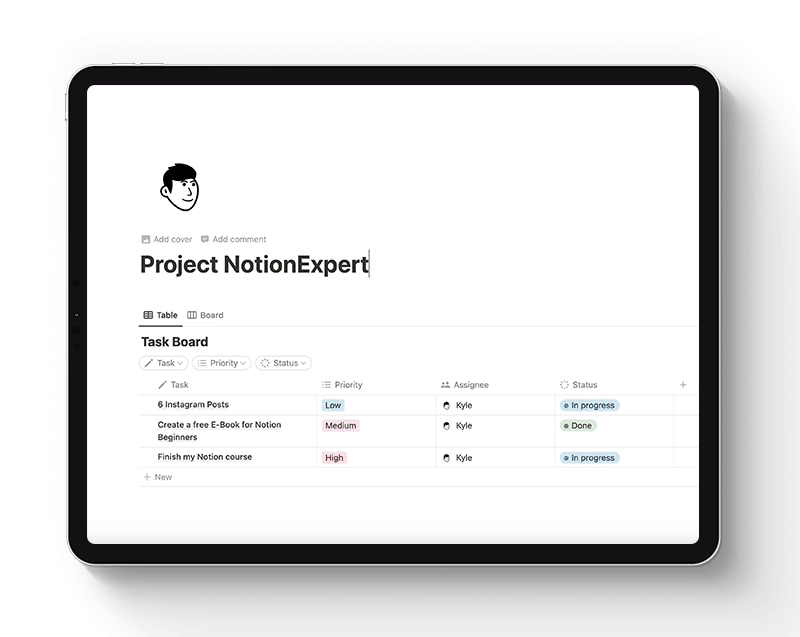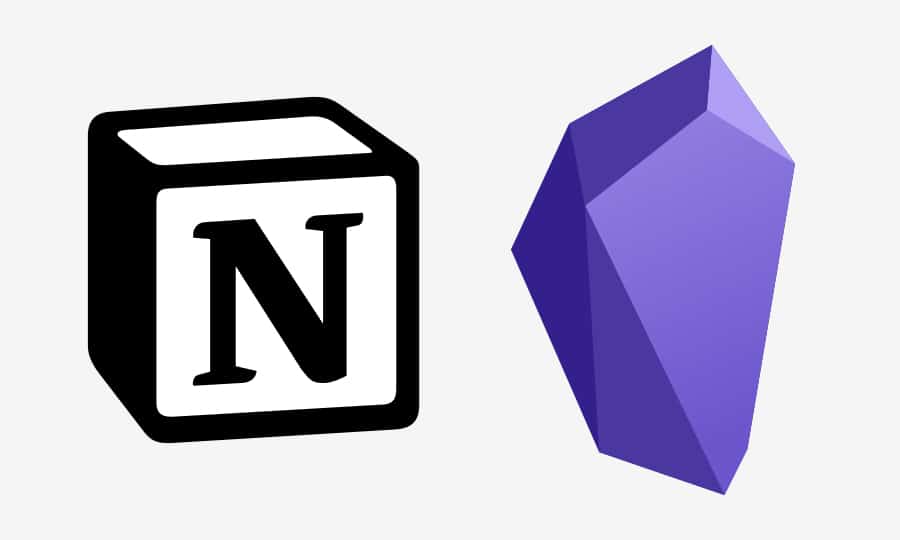In the ever-evolving world of digital note-taking software, two names have emerged as top contenders: Notion and Obsidian. These platforms have revolutionized the way we capture, organize, and retrieve information, both personal and professional. So which one of these powerful tools should you choose for your note-taking needs? In the ultimate showdown of Notion vs Obsidian, let’s delve deep into the features, functionalities, and pricing of both platforms. Plus, we’ll introduce a wildcard contender that might just blow you away.
THE QUICK ANSWER: Out of Notion and Obisidian, I still think Notion is the best choice.
Understanding Notion: A Comprehensive Overview
Considered an all-encompassing workspace, Notion offers a comprehensive suite of tools for note-taking, task management, and database creation. Its primary strength lies in its versatility, allowing you to take notes, manage projects, create wikis, and more, all within a single, user-friendly interface.
Notion’s Note-Taking Capabilities
Daily Notes
Notion allows you to maintain a daily log or journal using a pre-formatted template. You can enhance your entries with images, hyperlinks, videos, and emojis to create a personalized and interactive journaling experience.
Task Management
In addition to note-taking, Notion also doubles as a task-management tool. You can track your project’s progress using status reminders and checkboxes, and even create a visual project board.
Integration Features
One of Notion’s standout features is its extensive integration capabilities. It can seamlessly connect with popular software like Slack, Google Drive, Gmail, and Asana, further enhancing its utility.
Notion Websites
Believe it or not, you can even create a website with Notion! Some users utilize this feature to showcase their portfolio or resume, while others use it as a public note folder.
The Pros and Cons of Notion
Pros
- Intuitive UI with a learning curve
- API integration with popular tools
Cons
- Occasional latency issues
- Configuration can be somewhat challenging
- Data ownership concerns as notes are stored on Notion servers
Notion Templates
If you’re struggling to get started with Notion, check out our range of both Free and Premium Notion Templates.

Diving into Obsidian: A Detailed Examination
Obsidian is another robust note-taking application that operates on a local storage model, keeping your notes securely on your device. Obsidian’s unique selling point is its knowledge graph structure that interconnects your notes through bi-directional linking, which is quite different from Notion’s database-centric approach.
The Power of Obsidian
Knowledge Graph
Obsidian’s knowledge graph feature provides a visual representation of the relationship between your notes. This feature is particularly useful when you need to connect various notes back to a central idea.
Plugin Support
Obsidian extends its functionality by offering a multitude of plugins for features like Custom CSS, page previews, audio recording, kanban board view, and more.
Obsidian Publish
Just like Notion, Obsidian also allows you to publish your notes for public access. You can even use a custom domain for your published notes.
The Pros and Cons of Obsidian
Pros
- Extensive plugin options
- Highly customizable
- Efficient interconnection of notes
Cons
- Lack of native collaboration features
- Confusing pricing structure
- Additional costs for syncing across devices
The Key Differences Between Notion vs Obsidian
The primary difference between Notion and Obsidian lies in their accessibility: Notion is a cloud-based platform, while Obsidian is a locally stored, offline platform. To give you a clearer picture, here’s a table outlining the other significant differences between the two:
Notion vs Obsidian comparison table:
| Notion | Obsidian |
|---|---|
| Real-time collaboration: Yes | Real-time collaboration: No |
| Knowledge graph: No | Knowledge graph: Yes |
| Backlinking: Yes | Backlinking: Yes |
| Mobile app: Yes | Mobile app: Yes |
| Syncing across devices: Yes | Syncing across devices: No |
| Offline functionality: No | Offline functionality: Yes |
| Markdown support: Yes | Markdown support: Yes |
| Spell check: Yes | Spell check: Yes |
| API support: Yes | API support: Yes |
| Embed from third-party sites: Yes | Embed from third-party sites: No |
| Publish notes as websites: Yes | Publish notes as websites: Yes |
| Template support: Yes | Template support: Yes |
Now, let’s get into the specifics.
User Interface and Note Organization
Both Notion and Obsidian offer a user-friendly interface with distinct note organization features.
Notion
Notion’s workspace allows you to create pages, subpages, and even link page sections to other pages through backlinking. The note-taking experience in Notion is enhanced with features like emojis, banners, checkboxes, and more.
Obsidian
In contrast, Obsidian uses vaults to store notes. Obsidian’s interface allows for multiple files or panes to be opened simultaneously, facilitating parallel editing and viewing of notes.
Backlinking Features
Backlinking is an essential feature for connecting ideas and notes in both Notion and Obsidian.
Notion
Notion’s backlinking feature automatically creates a link each time you mention a related note, making it easy to manage tasks and create wikis.
Obsidian
For Obsidian, backlinking is a fundamental feature that simplifies building wikis and interconnecting ideas.
Note Sharing and Collaboration
Note-sharing and collaboration are key elements in any note-taking app. Let’s see how Notion and Obsidian fare in this aspect.
Notion
Notion excels in note-sharing and collaboration, allowing users to share links to edit, comment, or view workspaces.
Obsidian
Unfortunately, Obsidian falls short in this area. Collaboration is possible, but it’s not as seamless as Notion. However, Obsidian allows you to share public URLs of your notes through Obsidian Publish.
Automatic Note Saving
An automatic save feature is crucial in any note-taking app to prevent loss of data. Let’s see how Notion and Obsidian handle this.
Notion
Notion automatically saves all your notes in real time, ensuring that your work is always backed up.
Obsidian
Similar to Notion, Obsidian also automatically saves your notes, providing an extra layer of data security.
Cross-Platform Support
The ability to sync notes across devices is a key feature of any note-taking app. Let’s examine how Notion and Obsidian handle cross-platform support.
Notion
Notion allows you to sync your notes across various platforms, including Windows, macOS, iOS, Android, and the web app. However, it requires an internet connection.
Obsidian
On the other hand, Obsidian operates offline and stores your notes locally. While this ensures data security, it also means you can’t easily sync your notes across devices without paying for an upgrade.
Pricing
Both Notion and Obsidian offer free and premium plans. Let’s look at the pricing breakdown for both platforms.
Notion
- Personal (Free): Unlimited pages & blocks, sync across devices, share with five guests, API for custom integrations
- Personal Pro ($4 per month): Unlimited file uploads, unlimited guests, view and restore versions dating 30 days back
- Teams ($8 per month): Unlimited team members, sharing permissions, collaborative workspace, admin tools
- Enterprise (Custom Pricing): Advanced features for larger organizations
Obsidian
- Personal (Free): Community support, access to plugins and API
- Catalyst ($25 one-time payment): Early access to new features, special community badges, access to the exclusive dev channel
- Commercial ($50 per user per year): Commercial use and priority support
- Add-ons: Sync($8 per month), Publish ($16 per month per site)
Notion vs Obsidian – My Summary
It’s challenging to determine a clear winner between Notion and Obsidian as both have their unique strengths and limitations. However, if you’re looking for a more comprehensive solution that goes beyond note-taking, I personally prefer Notion as a great all-rounder.
